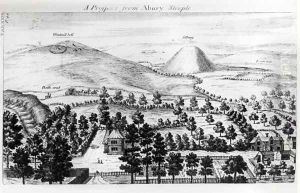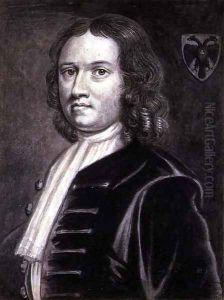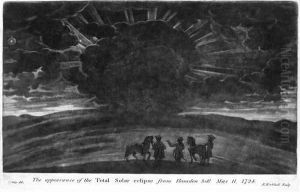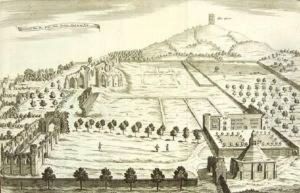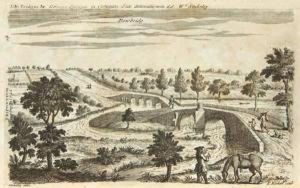William Stukeley Paintings
William Stukeley was an English antiquarian, physician, and clergyman, renowned for his pioneering work in the field of archaeology, particularly his studies of Stonehenge and Avebury. Born on November 7, 1687, in Holbeach, Lincolnshire, Stukeley developed an early interest in the natural and ancient history of England, which would shape his future career. He studied at Corpus Christi College, Cambridge, where he received a thorough education in the classics, theology, and medicine. After completing his studies, Stukeley practiced medicine in Boston, Lincolnshire, and later in London, where he became a member of the Royal Society and the Society of Antiquaries, two prestigious institutions that played significant roles in his life and work.
Stukeley's fascination with ancient monuments led him to conduct extensive fieldwork at some of England's most significant prehistoric sites, including Stonehenge and Avebury. His detailed observations and drawings contributed significantly to the documentation and understanding of these sites. In 1740, he published 'Stonehenge, A Temple Restor'd to the British Druids,' followed by 'Abury, A Temple of the British Druids' in 1743. These works proposed that the structures were religious temples built by Druids, an idea that, while later proven to be historically inaccurate, was revolutionary at the time and sparked widespread interest in British prehistory.
Stukeley's theories about the Druids and his romanticized vision of ancient Britain influenced not only archaeology but also literature and the arts. He was among the first to systematically record and interpret the arrangements of stones at these prehistoric sites, laying the groundwork for future archaeological investigations. Despite the inaccuracies in his Druidic theories, his meticulous documentation of the monuments themselves has been invaluable to later researchers.
Beyond his archaeological pursuits, Stukeley was ordained as a clergyman in the Church of England in 1729 and held various ecclesiastical positions throughout his life. His wide-ranging interests also led him to study and write on topics such as natural history, religion, and ancient history, making him a figure of considerable intellectual breadth in the 18th century.
William Stukeley's legacy is that of a pioneer in the field of archaeology and the study of ancient Britain. His work ignited a passion for British prehistory that has endured to the present day, and his early efforts to record and interpret the ancient landscape have earned him a place as a foundational figure in the history of archaeology. Stukeley passed away on March 3, 1765, but his contributions to the study of Britain's ancient past continue to be celebrated.
